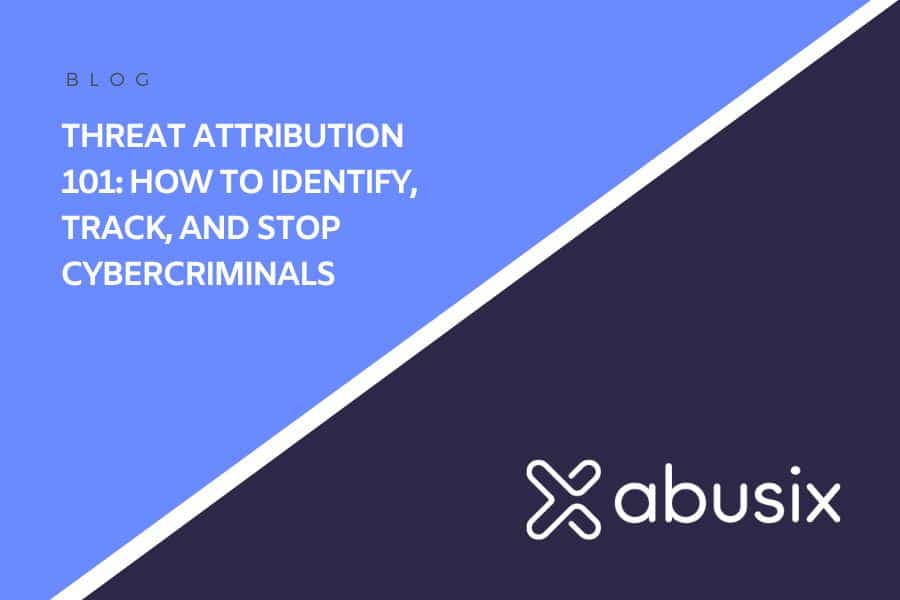Let’s say your organization just suffered a breach. You’ve identified the compromised systems, contained the malware, and restored your backups. Now what?
The next question is: Who did this—and why?
That’s where threat attribution comes in. It’s the practice of identifying the threat actors behind a cyberattack, understanding their tools and tactics, and using that intelligence to strengthen your defenses. Done right, attribution doesn't just help you recover—it helps you prepare, predict, and prevent future attacks.
Here’s what you need to know.
What Is Threat Attribution, Really?
At its core, threat attribution is the process of linking cyberattacks to specific individuals, groups, or nation-states. It involves analyzing patterns, behaviors, infrastructure, and digital forensics to answer:
- Who’s attacking us?
- How are they doing it?
- What are they after?
- What’s their history?
Attribution isn’t about naming and shaming—it’s about strategic defense. When you know who you're dealing with, you can respond intelligently, anticipate their next move, and reduce damage.
Why Threat Attribution Matters
1. It Helps Prioritize Your Response
Different attackers come with different risk levels. A teenage script kiddie looking to deface your site isn’t the same as a financially motivated ransomware group or a nation-state APT.
- If it’s a commodity phishing scam, your remediation might be technical cleanup and employee awareness.
- If it’s an APT group, you might need to reassess your entire network architecture.
2. It Improves Defense and Detection
Once you understand an attacker’s TTPs (Tactics, Techniques, and Procedures), you can create detection rules tailored to their behavior. This allows your SOC to spot similar threats faster in the future.
MITRE ATT&CK provides an excellent framework for mapping adversary techniques.
3. It Supports Legal and Policy Action
In some cases, attribution helps inform law enforcement investigations, regulatory reporting, and international policy decisions. While rare for private companies to pursue criminal charges themselves, your threat data may be crucial for others who can.

How Threat Attribution Works: A Step-by-Step Breakdown
Step 1: Collect and Analyze Technical Artifacts
Every cyberattack leaves traces—think of these as digital fingerprints.
Correlating these artifacts across different incidents helps build an attacker profile.
Step 2: Identify TTPs (Tactics, Techniques, Procedures)
TTPs are how an attacker behaves. While technical indicators can change quickly, behaviors are much harder to disguise.
- Do they use PowerShell for lateral movement?
- Do they exfiltrate data via cloud storage services?
- Do they use living-off-the-land binaries (LOLBins)?
MITRE ATT&CK is widely used to map these behaviors and match them to known adversaries.
Step 3: Infrastructure & Code Reuse
Attackers often reuse parts of their toolkits or infrastructure—especially when they get lazy or move quickly.
- Are multiple attacks using the same command-and-control server?
- Is the malware compiled with a unique string or watermark?
This type of technical fingerprinting helps tie together different campaigns.
Step 4: Use Threat Intelligence Feeds
High-quality threat intelligence feeds can provide attribution context, including:
- Known threat actor group names (e.g., FIN7, TA505, APT29)
- Associated campaigns
- Target sectors
- Geographic origin
Check out Abusix’s curated threat intelligence to see how we support attribution with real-time, validated insights.
Step 5: Cross-Reference with External Sources
Public and commercial intelligence sources, social media, dark web monitoring, and open-source investigations can offer attribution clues.
- Has the malware been seen in another industry?
- Is a known actor boasting about the attack online?
- Are similar IOCs appearing in global intelligence platforms?
Attribution is often a mosaic—each data point adds clarity to the picture.
Common Threat Actor Categories
While attribution can be highly specific, attackers often fall into general categories:
- Script Kiddies – Low-skill attackers using off-the-shelf tools.
- Cybercriminals – Motivated by financial gain (e.g., ransomware gangs, fraudsters).
- Hacktivists – Politically or ideologically driven attackers.
- Insider Threats – Employees or contractors with privileged access.
- Nation-State APTs – Highly resourced and persistent attackers often targeting espionage, infrastructure, or critical IP.
Understanding these archetypes helps you assess intent, persistence, and potential damage.
The Challenges of Attribution
Attribution is powerful—but it’s not perfect. Some caveats:
- Attackers can spoof artifacts to mislead investigators (false flags).
- Infrastructure can be shared across multiple actors (e.g., bulletproof hosting).
- Attribution may be inconclusive—especially without cooperation from ISPs, governments, or global threat exchanges.
That said, partial attribution still has defensive value. Even if you can’t name the actor, knowing their tools and methods strengthens your detection and response.
How to Get Started with Threat Attribution
- Use high-fidelity threat intelligence feeds that prioritize accuracy and context.
- Implement detection tools that map attacks to MITRE ATT&CK.
- Collect and correlate data across network logs, endpoints, and cloud environments.
- Participate in information-sharing communities (e.g., ISACs, CISA’s JCDC).
- Train your SOC to think in terms of patterns and behaviors, not just static indicators.
Abusix can help your organization build attribution-ready intelligence into your infrastructure.
Final Thoughts
You can’t stop what you don’t understand—and cybercriminals are counting on that.
Threat attribution turns reactive defense into proactive strategy. By identifying who’s behind the attacks, tracking their behavior, and anticipating their next move, you’re not just cleaning up after incidents—you’re staying one step ahead.
Ready to build a smarter defense?
Start with threat intelligence that actually tells you something.




